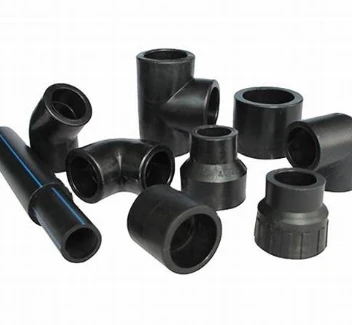Understanding Socket Pipe Fittings for Efficient Plumbing and HVAC Applications
Understanding Socket Pipe Fittings A Comprehensive Guide
Socket pipe fittings play an essential role in various plumbing and industrial applications, serving as vital components that connect sections of piping together. These fittings are specifically designed to ensure a secure, leak-proof connection, which is crucial for maintaining the integrity of fluid transportation systems. In this article, we delve into the significance, types, and installation of socket pipe fittings.
What Are Socket Pipe Fittings?
Socket pipe fittings are types of fittings that have a socket on one end, designed to receive the pipe. The pipe is inserted into this socket and typically secured with adhesive or mechanical means, ensuring a tight seal. These fittings can be made from a variety of materials, including PVC, CPVC, ABS, and metal options like steel and copper, catering to different applications based on the nature of the fluid being transported.
Types of Socket Pipe Fittings
Socket pipe fittings come in various shapes and sizes, each serving a unique purpose. Some of the most common types include
1. Socket Weld Fittings These are used in high-pressure applications and involve welding the pipe into the fitting for a robust connection.
2. Socket Couplings These fittings connect two pipes of the same diameter and allow for a straight connection.
3. Socket Elbows Designed to change the direction of piping, elbows are available in different angles, typically 90-degree or 45-degree.
5. Socket Caps Caps are used to close off the end of a pipe, preventing fluid from escaping.
socket pipe fittings

6. Socket Reducers These fittings allow for a smooth transition between pipes of different diameters.
Installation Process
Installing socket pipe fittings involves a few straightforward steps but requires precision to ensure a leak-free connection
1. Preparation Begin by cutting the pipe to the desired length. Ensure the cut is clean and square to facilitate a proper fit.
2. Deburring Remove any burrs or sharp edges from the pipe end to prevent damage to the fitting.
3. Dry Fitting Before applying any adhesives, dry fit the connection to ensure proper alignment and fit.
4. Application of Adhesive For plastic fittings, apply adhesive evenly inside the socket and around the pipe end. For metal fittings, ensure the surfaces are clean and free of contaminants before applying suitable sealant or welding.
5. Insertion Insert the pipe into the socket, giving it a slight twist to spread the adhesive evenly.
6. Curing Time Allow the adhesive or sealant to cure as per the manufacturer’s instructions before testing the system for leaks.
Conclusion
Socket pipe fittings are indispensable components in modern piping systems, offering versatility and reliability across various applications. Understanding the different types and proper installation techniques is crucial for anyone involved in plumbing, HVAC, or industrial applications. With the right knowledge and materials, one can ensure an efficient and safe flow of fluids, making socket pipe fittings a topic worthy of attention in the realm of piping solutions. Whether you are a professional plumber or a DIY enthusiast, mastering the use of socket fittings will undoubtedly enhance the quality and functionality of your plumbing systems.
-
The Key to Fluid Control: Exploring the Advantages of Ball Valves in Industrial SystemsNewsJul.09,2025
-
The Versatile World of 1, 2, and 3 Piece Ball ValvesNewsJul.09,2025
-
Stainless Steel Ball Valves: The Ideal Choice for Efficient Flow ControlNewsJul.09,2025
-
Optimizing Fluid Control with Ball Float ValvesNewsJul.09,2025
-
Manual Gate Valves: Essential for Control and EfficiencyNewsJul.09,2025
-
Everything You Need to Know About Butterfly ValvesNewsJul.09,2025
-
The Versatility of Wafer Type Butterfly ValvesNewsJul.08,2025




